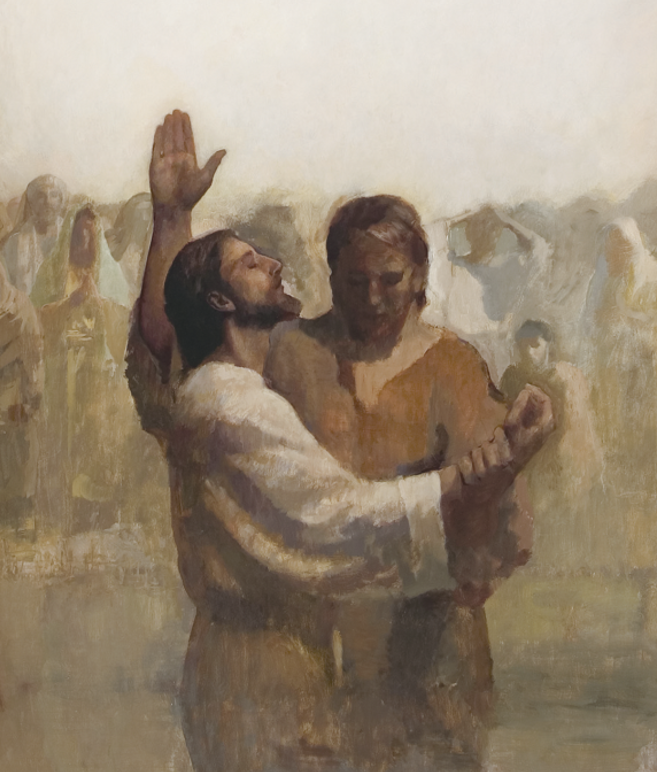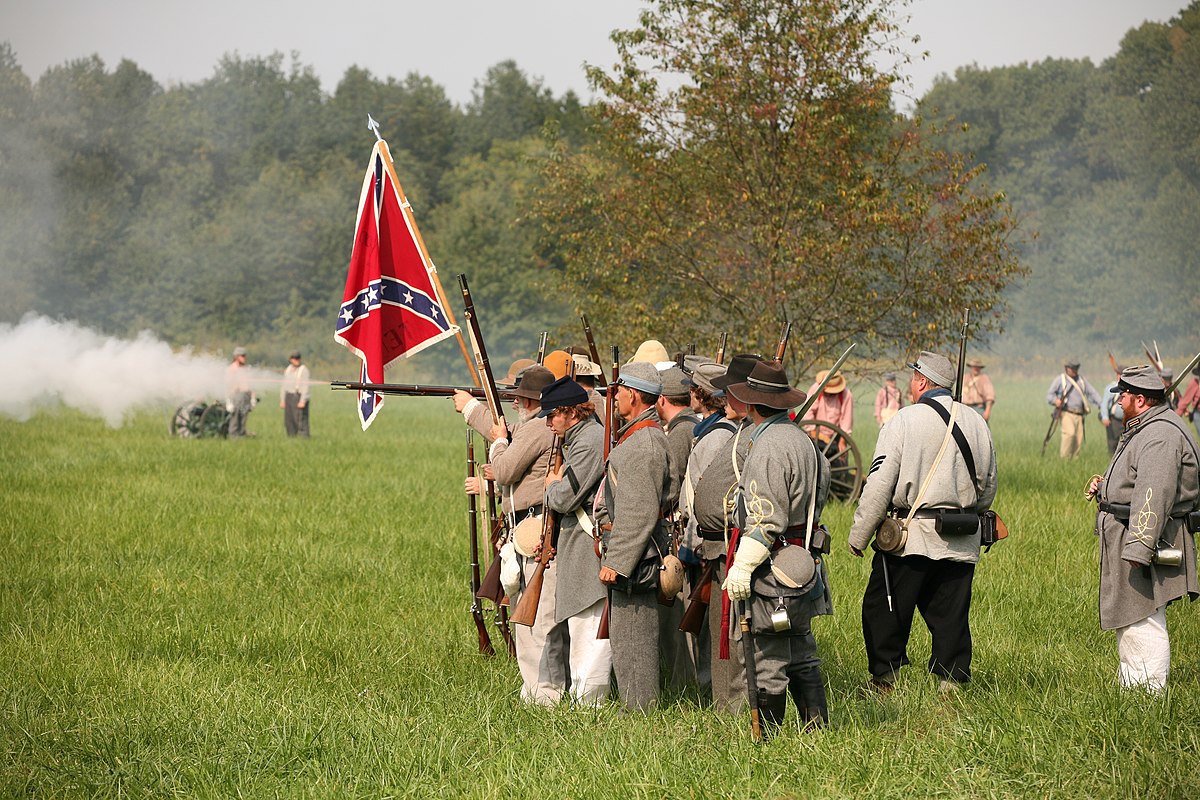My friend recently went off to participate in a ‚Äúlarping‚Äù festival, hosted at a picturesque castle overseas. She was a bit embarrassed to share the news about her trip‚Äîprompting my wife and me to look up more about ‚ÄúLive Action Role-Playing‚Äù (LARP) to understand more about what it was.¬Ý¬Ý¬Ý¬Ý
Inspired by popular fiction novels and table-top role-playing games, people began in the 1970s physically embodying certain characters in various fictional or symbolic settings, complete with elaborate venues and costumes. Rather than just enjoying a popular fantasy novel or movie‚Äîor dressing up as a Cosplay character at a Comicon convention‚Äîthis is about joining together with others to recreate key elements of a popular narrative with others who appreciate the same story.¬Ý¬Ý¬Ý
Although most LARPs are experienced as games for entertainment or artistic expression, they are also used for educational purposes. Bringing together roleplay simulations, improvisational theater, psychodrama, battle simulations, and historical reenactment, these immersive experiences can generate powerful insights for participants.¬Ý¬Ý
None of this would be strange to many of my therapist friends, who regularly employ psychodrama, symbolic roleplay, and different imagery/visualization exercises and thought experiments to help teach people grappling with life challenges‚Äîcreatively nudging their clients’ minds and hearts to a better place. Neither would any of this be so unusual to any who have participated in or witnessed other live-action reenactments, from the long history of American civil war reenactments to the more recent tradition of ‚ÄúPioneer Trek‚Äù¬Ýamong youth in the Church of Jesus Christ.¬Ý
“Weird because it’s so different.” Yet especially when it comes to some of the more unfamiliar live-action role-play scenarios, there can be some worry among participants at the perception of being involved. ‚ÄúLARP has a branding problem,‚Äù my friend told me‚Äî‚Äúit‚Äôs just mostly seen as weird by others who don‚Äôt understand the motives and purpose of the event.‚Äù¬Ý
That felt all too familiar to public perception of our own worship experiences in temples of The Church of Jesus Christ of Latter-day Saints. This last week, many strangers have been gawking at a popular media production dramatizing the symbolic worship experience in these sacred temples. Although producers of the show have gushed and been praised for their attention to “exquisite detail” of certain theatrical elements, the overall message to viewers (not including me—who cannot stomach it), is one of profound misrepresentation—portraying the day-to-day worship and religious life of millions of Latter-day Saints, as strange, foreign, and to be regarded with suspicion.
This is a wounding experience for many saints, especially when it comes to our temple experiences—to have something they cherish as sacred held up as a frightening spectacle for all the world to view. But as scholar Daniel Peterson notes, this can also potentially become an opportunity for clarification.
The celestial room has an “ancient counterpart” in the “holy of holies” within Israelite temples.
Of course, religious communities throughout the ages have reinforced truth figuratively through sacred ritual. From the Eucharist and holy supper of communion or “sacrament,” to passion plays and the experiential enactment intrinsic to Easter week itself, people of faith the world over continue to reach in these transcendent experiences for larger insights and meaning that are surprisingly relevant to the messy realities of modern life.
Yet the value of all this remains largely indecipherable to many secular minds. And that makes sense. I wouldn‚Äôt expect unfamiliar strangers or friends to understand my own experiences in the temple, certainly not assisted by filmmakers whose entire production manifests hostile bias towards a Church many of them have already rejected. But I would hope these friends would not only recognize this bias‚Äîbut hear out those of us with more direct ‚Äúlived experience‚Äù of these realities.¬Ý
Describing the indescribable.¬Ý For my wife and I, even amidst the turmoil of caring for a brain-injured, sweet baby girl, we credit so much of the unusual peace, joy, and power we have received as a family to what we‚Äôve experienced in the temple. It‚Äôs not a literary overstatement to say the learning, strength, and comfort experienced there has changed everything about our home, our marriage, and our lives.¬Ý¬Ý
If Latter-day Saints like me speak vaguely about their experiences inside, it‚Äôs not out of fear or embarrassment, like some involved in LARPing. It‚Äôs out of deep respect and love for something beautiful. In the age of heightened angst around privacy and confidentiality, you would think that kind of concern would be intuitive and immediately appreciated.¬Ý¬Ý
But even with incessant secular demands that boundaries be respected for a diverse range of experiences today, too often sacred ceremonies and rituals are instead held up for mockery and lampooning‚Äîwhich ridicule would be shocking in many other arenas.¬Ý¬Ý
Yet once again, maybe this is an opportunity for people of faith to better explain themselves in a language we are more comfortable with, and in a way that can hopefully help people make some connections. For instance, similar to some other live, experiential role-play events, we also wear different clothing in temples that is plain, white, and which figures meaningfully in the enactment of the transcendent gospel story.¬Ý¬Ý
The difference for us is we believe this story to be true. Although our temple enactments are thoroughly symbolic, they point our minds and hearts towards the reality of why we are here, what we are facing in this life, and where we aspire to be in the future. As President M. Russell Ballard told a group of reporters touring the Draper Utah temple prior to its dedication as they neared the Celestial Room—this is “like walking in, as close as we know how to depict it, into the presence of God.”

Celestial Room in the Payson, Utah Temple (churchofjesuschrist.org)
That celestial room, according to scholar Amy Hardison, has an “ancient counterpart” in the “holy of holies” within Israelite temples—where only one high priest could enter the sanctuary each year on the Day of Atonement. The other parts of this earlier temple experience also involved various barriers and passageways that could only be accessed by limited groups of people. By contrast, lawyer Daniel Ortner points out, thanks to the rending of the veil in Christ’s crucifixion, “in our day and in our temples each and every attendee can boldly go through the veil of the temple and enter into the symbolic presence of God.”
There is profound comfort, reassurance, connection, and sense of belonging that come from this experience. But there is also an expansion of knowledge and insight that, in our experience, doesn’t stop. While the manner of immersive education can seem strange to those primarily accustomed to book-learning, this kind of experiential education can be thrilling, perhaps especially to those who appreciate the distinctive power of ‚Äúlive-action role-playing.‚Äù
Elder John Witsoe called temple instruction a “wonderful pedagogy” that was uniquely appealing to him as a professional educator. In addition to careful presentation through spoken word, as we are all used to in a classroom, he emphasized the focus in temples on “representations by living, moving beings, and by pictorial representations in the wonderfully decorated rooms.”
“Every attendee can boldly go through the veil of the temple and enter into the symbolic presence of God.‚Äù
The greatest adventure of all. Two days ago, Matt and Brittney Maughan entered the castle-like Logan temple to divinely bless their love and marriage, after many years of fighting for both their faith and their family. They could have followed the inertia of secular society‚Äîwalking away from any such commitment‚Äîbut against all odds, they kept reaching for something higher.¬Ý¬Ý¬Ý
And they found it. Divine power flowing into their home. And an accompanying story about their lives and their future that has been transforming their home as they‚Äôve been living out that understanding as best they can. If you piece together the many images throughout scripture, you start to glimpse a story of stories‚Äîa mighty narrative that believers relish as underpinnings of ‚Äúthings as they really are‚Äù (and ‚Äúas they really will be‚Äù).¬Ý It goes something like this:
Once upon a time, we all started from a place of relative innocence. Much like Adam and Eve in the garden, we begin fresh, clean, and bright-eyed‚Äîas children.¬Ý¬ÝUntil‚Äîwell, you know what. Until everything else happens: the aching realizations that hit us all growing up. The heartache. And betrayal. The feeling used. And being abused (for¬Ýway too many).¬Ý The neglect. And loneliness. The grief. And anger.¬Ý The sorrow. And anxiety. Addictions and agonies. Despairs and darkness. Emptiness and numbness.¬Ý¬Ý
All of this is both enormously difficult and entirely anticipated within a Christian narrative where the human family has to face a being and his followers represented throughout scripture, among other things, as a predator (a “great dragon,” “that old serpent,” “a roaring lion, seeking someone to devour”)—with John channeling a piercing warning in his great Revelation, “Woe to the inhabiters of the earth and of the sea! for the devil is come down unto you, having great wrath.”
All that sounds pretty scary, but don’t stop there, because it’s not how the story ends! Like all great sagas, there is hope on the horizon. Among the many ways that the work of Jesus is described in sacred writ, none is more thrilling than the vivid imagery of a Great Rescue‚Äîfrom one who ‚Äúproclaim[ed] liberty to the captives, and the opening of the prison to them that are bound.‚Äù¬Ý
You might blame this on too many Liam Neeson and Mel Gibson movies (and Star Wars, Lord of the Rings, Avengers)‚Äîor perhaps these same movies are symbolically pointing to the same great reality:¬Ý our profound need for deliverance and rescue, by someone with everything needed to do the job right.¬Ý¬Ý
Because of Him, check out where the story goes next:¬Ý ¬Ý¬Ý

Illustration by J. Kirk Richards
- The rescued are washed and cleansed from all the filthiness and rot of their prior dungeon existence.¬Ý¬Ý
- They are tenderly clothed in new garments of power and beauty.¬Ý¬Ý
- They are given a new place at a feast with ‚Äúliving water‚Äù and ‚Äúbread of life‚Äù‚Äîand eventually the ‚Äúfruit of the tree of life,” representing God’s love and the abundant life¬Ýof joy and peace given to all his followers.¬Ý ¬Ý
- They are all welcomed into a new home‚Äîadopted permanently into a holy family of peace, joy, and love.¬Ý¬Ý
- And they then go from rescued, to rescuer‚Äîwith plentiful opportunities to serve and go to work, joining with others to build a kingdom that will one day fill the earth. (Imagine what a difference this alone would and could make to the many millions of people devoid of hope, meaning and purpose in the world‚Äîto be able to dive in, roll up their sleeves, and help build this “better world“).¬Ý
And when will that better world happen? When the Prince of Peace returns for good. Until then, as C.S. Lewis famously wrote, Christians are like a rebel force living in “enemy-occupied territory—that is what this world is.” And “Christianity is the story of how the rightful king has landed, you might say landed in disguise, and is calling us to take part in a great campaign of sabotage.”
How‚Äôs that for a mighty narrative of adventure? Name one imaginary quest or movie saga that beats this one in excitement…little wonder we do all we can to “tell the Father’s story” anywhere we can!
A prince and princess entering the ‚Äúpalace of God.‚Äù ¬ÝThe personal realization of this great saga for Latter-day Saints is an ordinance we call a ‚Äúsealing,‚Äù overseen by authority in temples to unite families forever, which reflects the same power that Jesus gave to His apostles. As I witnessed Matt and Brittney committing their hearts and lives together in this sealing ordinance, the energy was otherworldly. Joy and peace filled the room.¬Ý¬Ý

It was nearly impossible to shake the sense that this beautiful family‚Äîno matter what they would have to face in the tumultuous days ahead‚Äîhad just planted its roots on a supernatural foundation, one that not even the “jaws of hell” could shake. All this thanks to what they had just experienced in the ‚Äúpalace of God.‚Äù (Scholar Amy Hardison notes that in Hebrew, the word for temple is ‚ÄúHekal,‚Äù which can just as easily be translated as ‚Äúpalace.‚Äù)
Like all disciples of Christ, their journey of progression and learning, sanctification, and endowment would be long‚Äîbut that’s true of anyone embarking on this exalting journey. What an adventure! Matt and Brittney had joined the ‚Äúkingdom of priests [and priestesses], and an holy nation‚Äù described in Exodus‚Äîwith an indescribably bright future. As we left the castle of the Lord‚Äôs house this week, I looked at its ramparts and thought of my other friend, nestled off somewhere by another castle enacting another, very different story than we just did.
And I smiled.¬Ý

The post Live Action Role Playing and Sacred Symbolic Pedagogy appeared first on Public Square Magazine.
Continue reading at the original source ‚Üí




